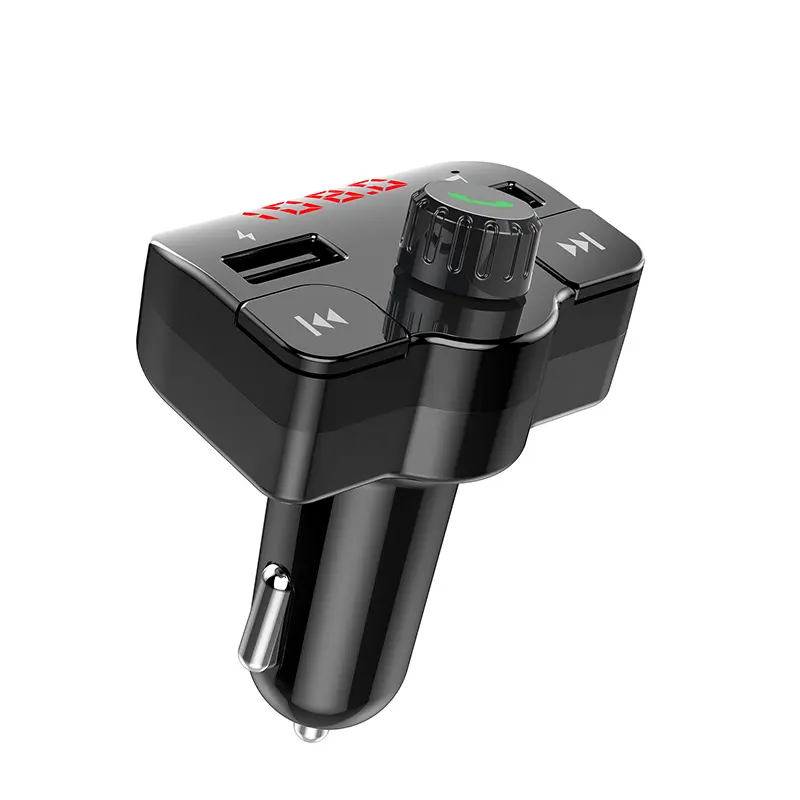In today's fast-paced lifestyle, keeping our devices charged efficiently during travel is more important than ever. The way drivers power up their smartphones has significantly evolved, shifting from traditional cables to advanced wireless solutions. A wireless car charger is no longer just a luxury accessory but a common feature in many modern vehicles. While the transition to wireless has gained momentum, wired chargers still remain in use for various reasons. Exploring the differences between a wireless car charger and a wired car charger can help users make an informed decision based on their needs.
One of the key differences between a wireless car charger and a wired option is the charging speed. Typically, wired car chargers offer faster charging times due to direct connection with the power source. High-speed charging technologies such as Quick Charge or Power Delivery are often supported by wired setups.
On the other hand, a wireless car charger may offer convenience but sometimes sacrifices speed. While modern wireless chargers are closing the speed gap, they may still take longer to charge a device fully, especially for power-hungry phones or tablets.
Wireless car charger technology uses electromagnetic induction, which can result in minor energy loss during transmission. This makes wired chargers slightly more energy-efficient in many cases. However, innovations in coil design and alignment have helped narrow this efficiency gap, making wireless options more viable for daily use.
The main appeal of a wireless car charger is the elimination of tangled cables and repetitive plugging and unplugging. With a wireless charger, you simply place your device on the charging pad, and the process begins automatically. This simplicity is especially beneficial during short trips or rideshare driving, where quick access to a charged phone is crucial.
Most wireless car charger models are designed to support Qi-enabled devices. However, proper alignment is essential for optimal charging, and movement during driving can affect placement. In contrast, wired chargers maintain a consistent connection as long as the cable remains plugged in, reducing the likelihood of disrupted charging sessions.
Over time, the frequent plugging and unplugging of wired chargers can lead to wear and tear on both the charging port of the phone and the cable. A wireless car charger reduces this mechanical strain, potentially extending the lifespan of the device's charging interface.
A high-quality wireless car charger is built to withstand temperature variations and vibrations associated with vehicle use. While both charging options can last for years with proper care, the wireless approach reduces physical handling, leading to potentially fewer maintenance issues over time.
Safety is a critical consideration for any charging device. Wireless car charger systems can generate more heat compared to wired alternatives due to energy transfer inefficiencies. However, advanced models include built-in temperature sensors and auto shut-off features that help prevent overheating.
Modern wireless car charger units often include built-in safety mechanisms such as over-voltage protection, short-circuit prevention, and temperature regulation. These features are also present in many wired chargers, but wireless chargers are increasingly catching up in terms of safety technology.
A wireless car charger often adds a sleek and modern touch to a vehicle's interior. Dash-mounted or air vent-integrated wireless models provide minimalistic design without clutter. This visual advantage makes them a preferred choice for drivers who prioritize aesthetics.
Wired chargers are usually more portable and easier to swap between vehicles. While some wireless car charger systems are designed for universal use, others are built to integrate permanently with a car's console. The right choice depends on the driver’s preferences and usage habits.
In general, a quality wireless car charger may come at a higher upfront cost compared to basic wired models. This is due to the advanced technology and materials used in wireless designs. That said, the added convenience and reduced cable replacement needs can justify the investment.
Although the initial cost may be higher, a wireless car charger can offer greater long-term value through increased durability, enhanced safety features, and less wear on your phone. Users looking for a future-proof solution may find wireless options more appealing over time.
For daily commuters, the convenience of a wireless car charger can be a significant advantage. It reduces distraction and promotes safer driving habits by allowing the phone to be placed and charged in one motion.
In contrast, a wired charger may be preferred for long-distance travel where maximum charging speed is needed. The reliable connection ensures that power-hungry apps like GPS navigation remain fully functional throughout the journey.

The future of in-vehicle charging is leaning heavily toward wireless solutions. Many new vehicles come with built-in wireless charging stations integrated into the dashboard. A modern wireless car charger may also work in tandem with voice assistants and car infotainment systems.
With ongoing improvements in wireless power standards and increasing device compatibility, a wireless car charger is expected to become the dominant charging method in the automotive industry. This trend suggests a promising future for hands-free, safe, and efficient mobile power solutions.
Look for a wireless car charger that supports your phone's charging standard (like Qi), fits securely in your car, and includes safety features such as temperature and voltage protection.
Yes, most wireless car charger models are built with heat and power management systems that protect your phone during extended charging periods.
Many wireless car chargers work through thin, non-metallic cases. However, thicker or metal cases might interfere with charging performance.
When properly used, a wireless car charger consumes minimal power and is unlikely to significantly drain the car battery, especially while the engine is running.

Copyright © 2024 Shenzhen GXY Electronic Co.,LTD All Rights Reserved Privacy policy